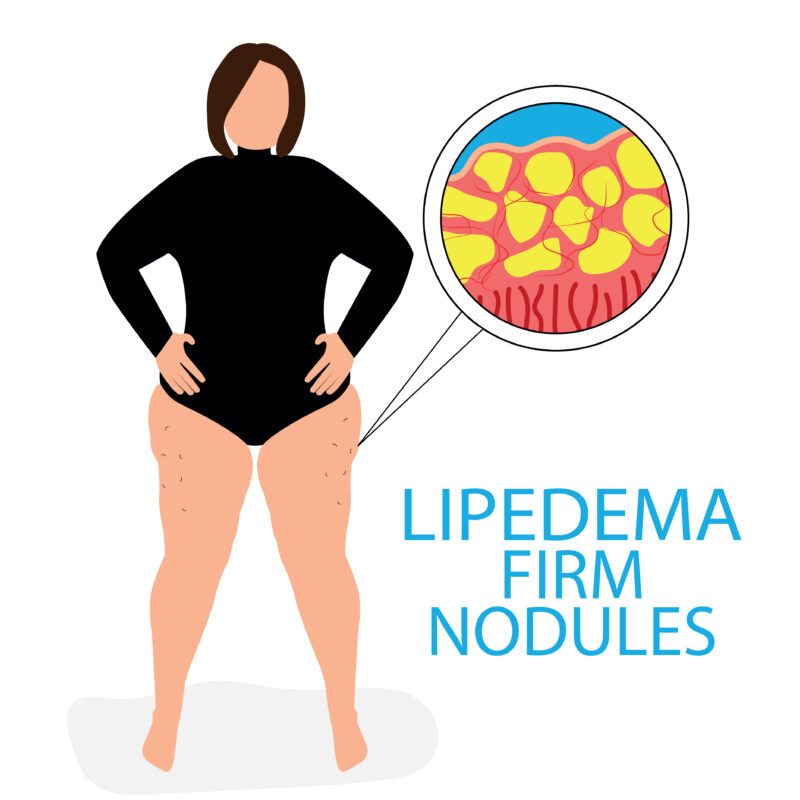Overview of Lipedema Fat vs. Normal Body Fat
Lipedema is a chronic condition that affects the distribution of fat cells in the body, causing an abnormal accumulation of fat in certain areas, typically the legs and buttocks. This condition can be painful and debilitating for those who suffer from it, leading to a lower quality of life.
In recent years, lipedema surgery using Power Assisted Liposuction (PAL) and Water Assisted Liposuction (WAL) has emerged as a potential treatment option. This procedure aims to remove excess fat cells and alleviate symptoms associated with lipedema.
To fully understand the science behind lipedema fat versus normal body fat and the potential benefits of PAL and WAL, it’s important to delve into a comprehensive analysis of this condition and treatment method.

Causes and Symptoms of Lipedema Fat
Lipedema fat differs from normal body fat due to its unique causes and symptoms. The exact cause of lipedema remains unclear, but factors like genetics and hormonal imbalances are believed to play a role in its development. Individuals with lipedema often experience swelling, tenderness, and bruising in the affected areas, leading to discomfort and mobility issues. Unlike normal body fat, lipedema fat does not respond to traditional weight loss methods, making it crucial to identify and address this condition promptly. Understanding the causes and symptoms of lipedema fat is essential in guiding effective treatment strategies for those affected by this condition. Stay tuned for insights on managing lipedema fat and improving quality of life.

Differences in Structure and Distribution of Lipedema Fat
Lipedema fat is characterized by its distinct structural and distribution differences compared to normal body fat. In individuals with lipedema, fat accumulation typically occurs symmetrically in the lower body, affecting the hips, thighs, and sometimes the arms. This unique distribution pattern sets it apart from regular body fat, which tends to accumulate more evenly throughout the body. Furthermore, the structure of lipedema fat often presents as nodular and firm to the touch, contributing to the characteristic texture of affected areas. Understanding these structural and distribution variations is crucial for accurate diagnosis and tailored treatment approaches.
Impact of Lipedema Fat on Quality of Life
Living with lipedema fat can significantly affect one’s quality of life. The condition not only poses physical challenges like pain, limited mobility, and discomfort but also takes a toll on mental well-being. Individuals may experience body image issues, emotional distress, and social isolation due to the visible changes in their body shape. Coping with these challenges can be overwhelming, leading to decreased self-esteem and confidence. Understanding the emotional and social impact of lipedema fat is crucial in providing holistic care for affected individuals.

Research and Studies on Lipedema Fat
Research on lipedema fat has gained traction in recent years, shedding light on the unique characteristics of this adipose tissue compared to normal body fat. Studies have delved into the inflammatory nature of lipedema fat, its resistance to traditional weight loss methods, and potential genetic predispositions. Understanding these findings is vital in developing targeted treatment approaches that address the underlying mechanisms of lipedema.
When you are ready to get started on your jorney to overcoming this fat disease disorder, call or fill out our form to schedule an in-person consotation withe Marcia Byrd, M.D.
